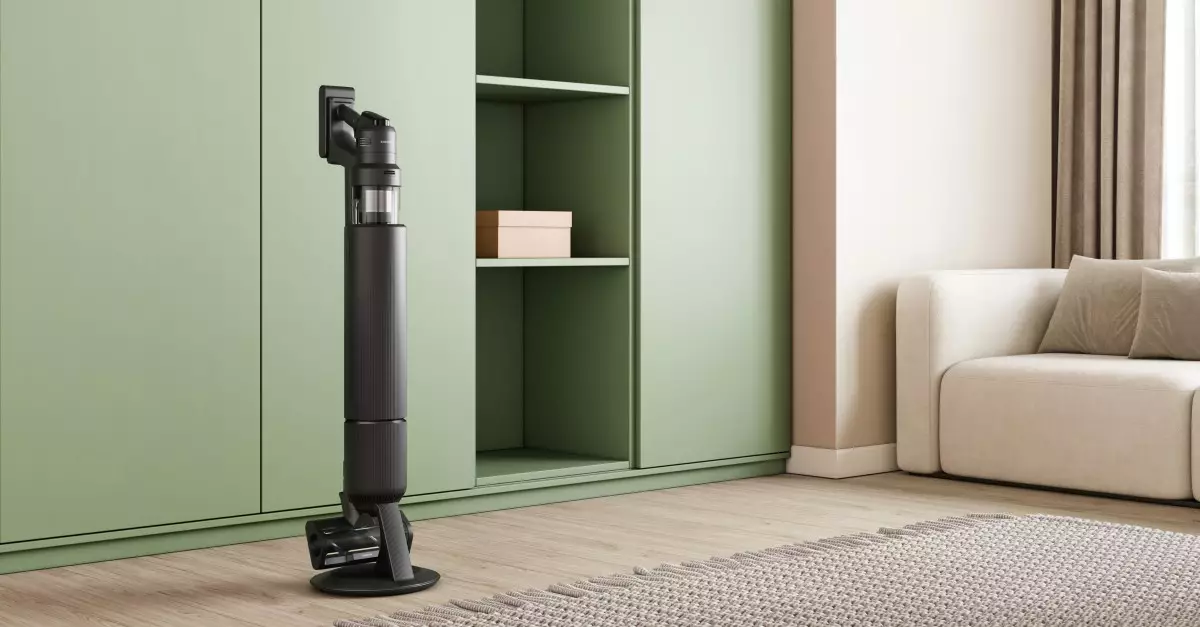As technology relentlessly marches forward, the integration of smart features into everyday appliances is reshaping how we manage our homes. Samsung’s latest innovations, particularly the Bespoke Jet AI vacuum cleaner and laundry solutions, exemplify this evolution. For homeowners, these devices promise not just efficiency but also a seamless connection to the digital world. By incorporating advanced features like LCD displays and smartphone connectivity, these appliances are no longer just devices; they are becoming extensions of our lifestyles. The ability to receive notifications, answer calls, and even control appliances through a centralized app transforms mundane chores into a more interactive experience.
Samsung’s Impact on Home Management
At the forefront of this smart appliance revolution, Samsung has leveraged their AI technology to integrate more advanced capabilities into household chores. The Bespoke Jet AI vacuum stands out with its remarkable suction power of 400AW and an impressive battery life of up to 100 minutes. However, what makes this vacuum truly innovative is its ability to notify users of incoming calls and texts directly on its built-in LCD display. This feature is a significant leap from traditional vacuum cleaners, offering real-time communication without the need to pause your chores or dig through your pockets for your phone.
The Bespoke AI Laundry Vented Combo washer and dryer similarly exemplify this new wave of connectivity. Priced at $3,099, this appliance is not just about laundry; it is about maintaining connectivity during a traditionally isolated task. Imagine answering a call while your hands are covered in detergent or fabric softener—a convenience that enhances the everyday laundry experience. What’s more, the washer can automatically dispense detergent, further minimizing user input and allowing for a more streamlined workflow.
AI Home: A Comprehensive Ecosystem
Samsung’s introduction of the AI Home ecosystem illustrates an ambitious vision for home connectivity. By implementing 7- and 9-inch LCD screens across various appliances, from fridges to ovens, the company aims to create a cohesive environment where everything is connected. The potential for smart fridges that not only keep your food fresh but also help you plan meals with real-time inventory tracking and smart recipe suggestions is truly staggering. Coupled with its SmartThings application, these devices can manage alerts from other smart home devices, enhancing the interconnectedness of the smart home ecosystem.
Imagine a scenario where you can talk to the person at your Ring doorbell while transferring laundry from the washer to the dryer—this is the reality Samsung envisions, turning each appliance into a hub of activity and communication. The convenience of having all essential features accessible via a touchscreen embedded in everyday appliances is undeniably attractive.
The Dark Side of Connectivity: Obsolescence and Ads
However, this surge towards fully integrated smart technology raises valid concerns about obsolescence and dependency on intricate electronics. Screens integrated into appliances may ultimately face the same fate as other tech products—risk of malfunction and the burden of replacing expensive components. The reliance on LCDs for even the simplest tasks may also seem excessive, with traditional controls often providing durability and ease of use that touchscreen interfaces cannot match.
Additionally, an underlying concern lingers regarding the potential for these smart appliances to become avenues for advertising. While Samsung currently refrains from implementing ads on their appliances, the worry remains that the future could see advertisements interrupting our daily lives, much like we experience on many smartphones and tablets. This possibility could undermine the originally intended convenience, replacing what should be straightforward tasks with commercial interruptions.
Cultivating a Harmonized Home Experience
Despite the challenges posed by this technological shift, the benefits of smart appliances and their interconnected features are undeniable. The capability to manage various devices and control daily tasks through a single platform can free up time and provide a sense of control over one’s environment. In many ways, these innovations reflect a broader trend towards embracing technology as an aid in our lives rather than a distraction.
As we transition into an era where appliances become increasingly intelligent, there lies immense potential to enhance our living environments. The ultimate challenge lies in balancing the advantages of connectivity and automation with practical considerations regarding durability and user experience. Overall, as smart technology continues to infiltrate our homes, it reshapes not just our daily routines but also our relationship with the very devices that facilitate our lives.

